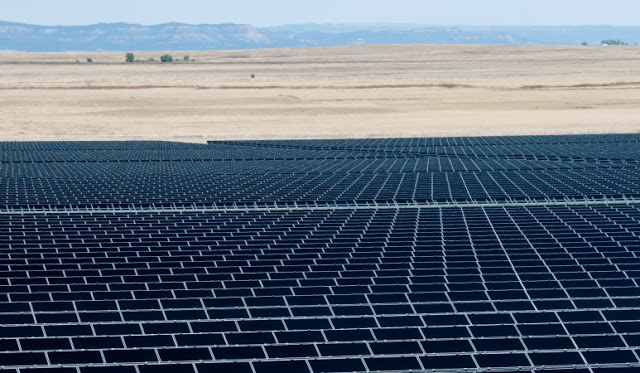The solar market in the U.S. added 2.6 gigawatts of solar photovoltaics in the third quarter of 2019, with total solar capacity — which includes both photovoltaic and concentrating solar power — hitting 71.3 GW, according to a new report.
The figures, released Thursday morning, come from the most recent U.S. Solar Market Insight Report from Wood Mackenzie Power & Renewables and the Solar Energy Industries Association (SEIA). Photovoltaic refers to a way of directly converting light from the sun into electricity.The SEIA describes concentrating solar plants as using mirrors “to concentrate the sun’s energy to drive traditional steam turbines or engines that create electricity.”
The 2.6 GW of capacity added during the third quarter represents a 45% increase compared to the third quarter of 2018 and a 25% increase compared to the second quarter of 2019, the SEIA said.
Breaking the figures down, the third quarter saw the U.S. residential market install 712 megawatts (MW) of solar. California led the way in this market, installing almost 300 MW.
For 2019 as whole, Wood Mackenzie is forecasting year-over-year growth of 23% and expecting 13 GW of installations. To put things in perspective, China added 44 GW of solar photovoltaics in 2018, according to the International Energy Agency (IEA). In 2017, the country added 53 GW, the IEA says.
While Thursday’s figures are encouraging, there is clearly still work to be done for solar in the U.S. Figures from the Energy Information Administration (EIA) show that utility-scale electricity generation sites in the U.S. produced around 4,171 billion kilowatt hours in 2018. Fossil fuels were responsible for 63.6% of this generation, while renewables accounted for 16.9%. Breaking the EIA’s numbers down further, solar’s share of the total was just 1.5%.
The U.S. figures come after SolarPower Europe published its first EU Market Outlook for Solar Power earlier in the week.
According to its report, an estimated 16.7 GW of installations took place in the EU in 2019, a significant increase compared to the 8.2 GW in 2018. Spain represented the largest market for additions in 2019, increasing its capacity by 4.7 GW, according to SolarPower Europe.
“There are several reasons to explain the growth of solar in Europe,” Aurélie Beauvais, SolarPower Europe’s policy director, said in a statement Tuesday.
“Primarily, this increased demand can be attributed to solar’s cost-competitiveness — it is often the cheapest power generation source — as well as the approaching deadline for member states to meet their binding national 2020 renewable energy targets,” she explained.
“EU countries have also begun to prepare for their road to compliance with the Commission’s Clean Energy Package, which sets a 32% renewables target by 2030,” Beauvais added, noting that many national governments were “increasingly looking to low-cost solar to meet their targets.”
SolarPower Europe’s installation figures for 2019 are first estimates based on government agencies’ official data. When this kind of information was not readily available, SolarPower Europe took data from its members, which are national solar associations.






